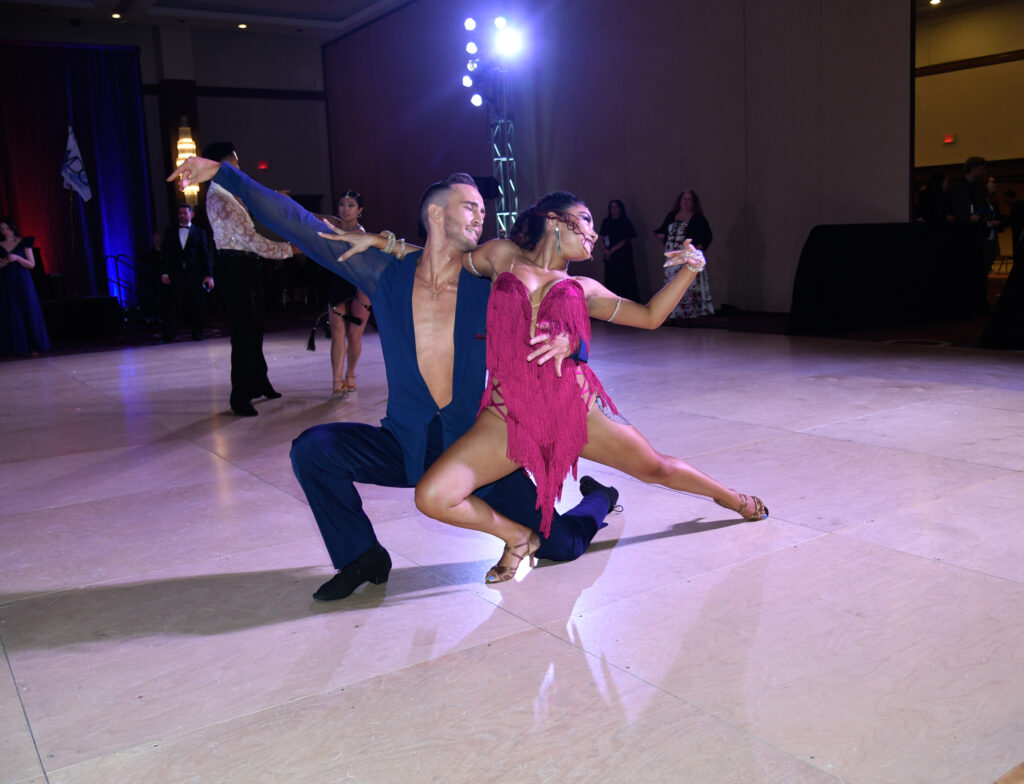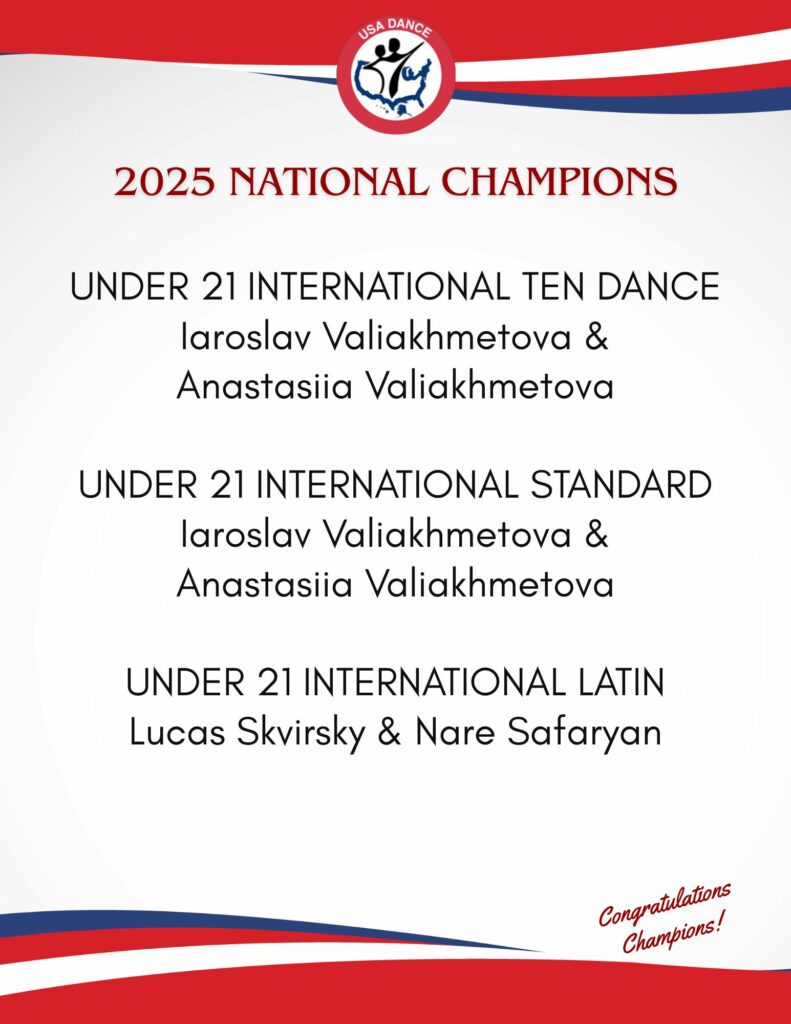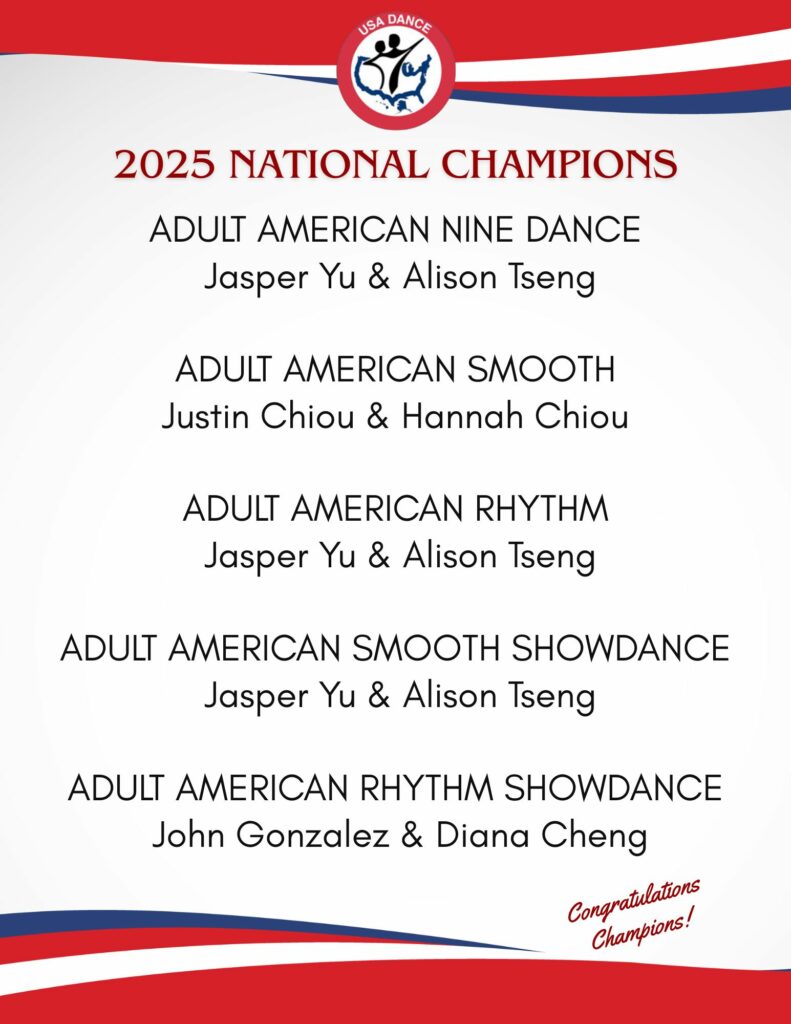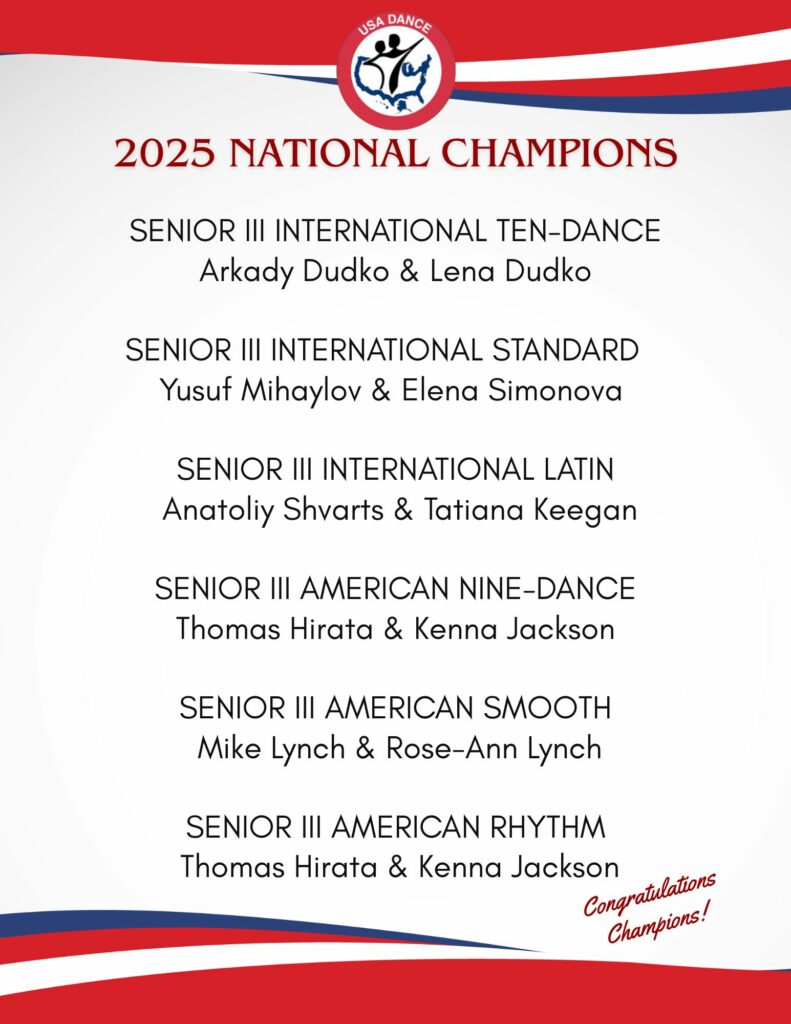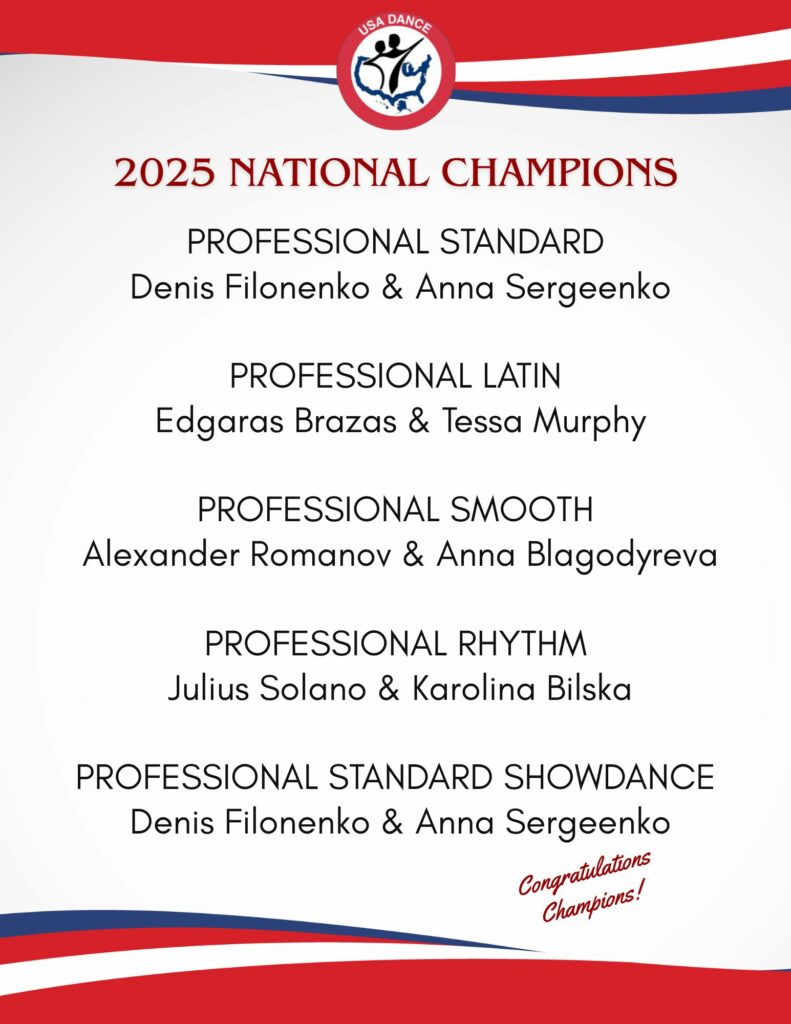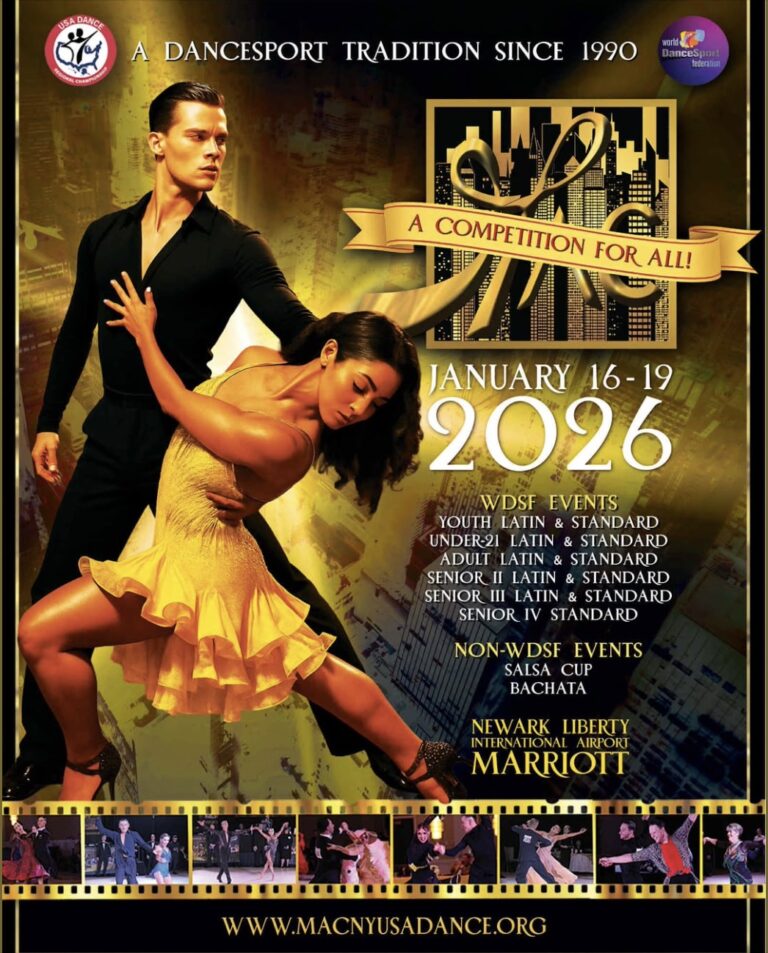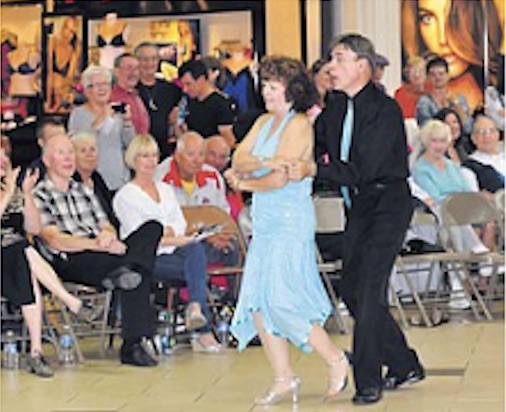Editor’s Note: USA Dance Adjudicator Patti Panebianco’s article, “Shared Axis” has proven to be one of the most sought-after articles in American Dancer’s recent years. Last January, at the National Dance Camp, Patti introduced Bonnie Diaz, who taught the concept of 3D Partnership System to attending USA Dance competitors. In this article, Bonnie summarizes the 3D Partnership System in hope that it will benefit all Competitive Athletes and Social Dancers in all Styles.
 As we navigate through life and the Ballroom Dance world, we know that there are three kinds of performance stages:
As we navigate through life and the Ballroom Dance world, we know that there are three kinds of performance stages:
- Proscenium: The classic arch stage seen in most Broadway-Theatre Productions. It serves as a frame for the audience to observe the angles of that performance.
- Thrust: A stage that extends into the audience and is surrounded by three sides without a proscenium.
- In The Round: Something seen from all sides and completely surrounded by the audience. This is the state the competitive ballroom world prefers.
How does a couple or competitor remain seen at all times and look good when the audience or judges are looking at them from different angles? By learning to project their bodies and partnership in a Three-Dimensional (3D) way.
Years ago, Ballet, Opera, and Theatre Companies all performed on a raked stage, which sloped upward and away from the audience to improve the view and sound. As performances and techniques developed over the years, the stage was leveled off and the audience was put in a raked position to improve the spectators’ view.
Ballet performers knew they were still performing in a one-dimensional way, which had a flat visual effect, so they developed the “Epaulement” which is the positioning of the shoulders, head, and neck that adds style and expression to the movement in a 3D way. This also includes the ribs (core) and arms.
In competitive performance, a 3D closed or open dance position must be created and maintained.
The 3D Partnership System can achieve this.
Each dancer approaches a partnership with a skill set — mastered or developing. They learn and develop core placement, footwork, choreography, musicality, Cuban hip action, etc. They explore their own unique authentic selves and artistic expression. Once this has been acknowledged, the concept of a Shared Axis can be applied.
The definition of an “Axis” is a straight line around which a body or geometric object rotates or may be conceived to rotate. The “Shared Axis” exists in all styles of partnership dancing and is the straight line that a couple visually turns and shapes around.
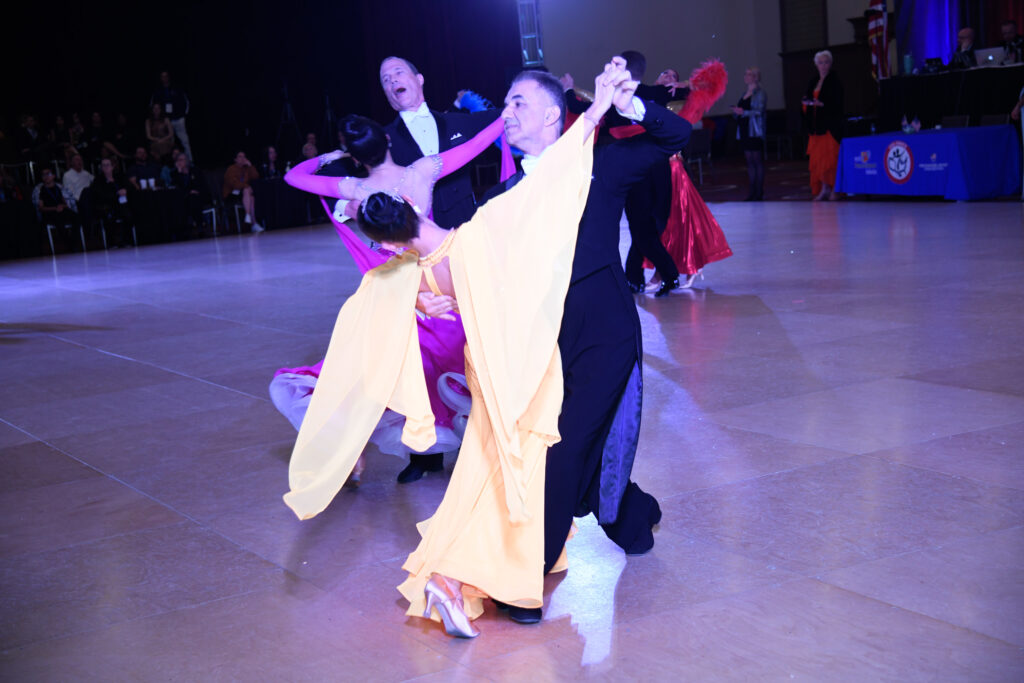
By being aware of the image of a moving separate shared axis between a couple, each person can focus on shaping, rotating, or turning their bodies around that shared image. This image may also be referred to as acommon center. The couple perceives this mindset in a 3D way, recognizing that in dancing a center pointmay be fixed or in one spot. A shared axis is like the sun rotating while the planets rotate around it. Thisshared axis may move up or down, or most importantly be spinning around between the couple because allthree are in perpetual motion. Even something that is standing still has a quiet underlying energy to it.
Once the couple at any level understands and establishes this concept, freedom from depending on eachother is released. One person may always be starting the movement or changing the direction becausesomeone goes forward and someone goes backward, but the freedom of creating your body languagearound the shared axis allows for creative, artistic, and authentic expression.
Don’t think about fitting the concept or perception of someone who doesn’t have matching body structure,leg length, or heel height. Never mind not matching each other’s center of gravity. The only desiredoutcome will be the unique freedom of expression of the couple around the dance floor.
Components of the 3D Partnership System are:
- BODY: Individual skill set. Frame, core work, Cuban hip action, footwork, etc.
- MIND or MIND SET: In your mind’s eye. Creating and visualizing your perception. No extra mind chat.
- SPIRIT or LIFE SET: How you produce your outcome in the highest awareness and consciousness possible. The seat of your emotions, the character of your soul. Your overall well-being. This will ripple into your everyday life.
Thoughts about 3D perception:
Stephen Hawkins: “Intelligence is the ability to adapt to change.”
Albert Einstein: “I am enough of the artist to draw freely upon my imagination. Imagination is more important than knowledge. Knowledge is limited. Imagination encircles the world.”
For more Dance information go to Ballroomology.com
© Copyright Bonnie Diaz All Rights Reserved
Check out Patti Panebianco’s excellent article: Shared Axis Center — the fundamental partnering skill.

